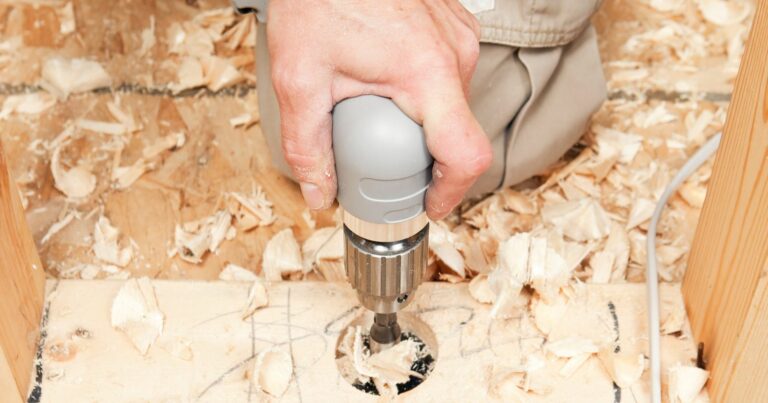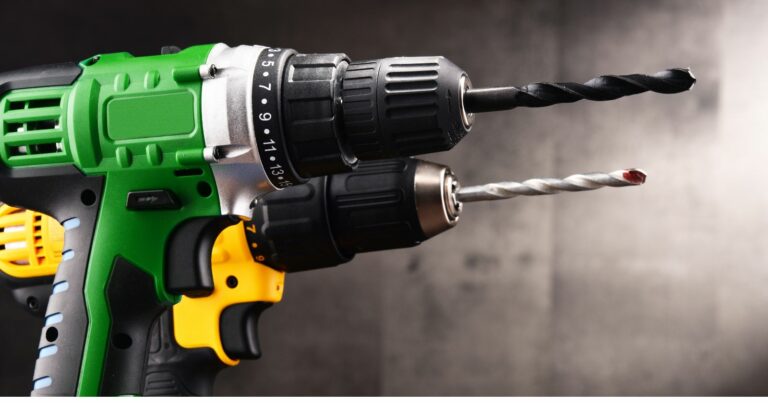What Is A Right Angle Drill Used For? A Comprehensive Guide
When it comes to drills, I’m sure many of us are familiar with the usual suspects – our standard drill/drivers and perhaps even the hammer drills. However, let’s not overlook the unsung hero of my toolkit: the right angle drill. Today, I want to delve into the nitty-gritty of what I personally use a right angle drill for.

Understanding Right Angle Drills
A right angle drill is a power tool with a head set at a 90-degree angle to its body. This gives it distinct ‘L’ shape and makes it uniquely suited for some tasks regular drills just can’t handle.
Components of a Right Angle Drill
A right angle drill consists of a few key parts – the motor, a long body or handle, and a chuck (where you attach the drill bit) at a 90-degree angle. Each of these components plays a crucial role in the functionality of this tool, ensuring it can carry out its duties as the “awkward corner specialist.”
Who Uses a Right Angle Drill?
You might wonder, who needs a drill that looks like it got its neck twisted? Surprisingly, many professions find it indispensable.
Right Angle Drills in Construction
Builders and construction workers often have to work in tight spaces or corners. Right angle drills, with their unique design, make it possible to drill in such confined areas.
Right Angle Drills in Plumbing
Plumbers use right angle drills to make holes in tight spaces, especially while working around pipes and fixtures.
Right Angle Drills in Electrical Work
Electricians, those masters of the live wire, use right angle drills to drill holes for wiring in spaces too tight for conventional drills.
What is a 7 Amp Right Angle Drill Used For?
The 7 amp right angle drill is a powerhouse. This particular model brings more muscle to the table, enabling it to tackle heavy-duty tasks that lesser drills might shy away from.
Heavy-Duty Drilling
With its 7 amp motor, this drill is capable of boring large holes through tough materials like thick lumber or metal.
Precision Drilling
Despite its power, a 7 Amp right angle drill isn’t all about brute force. It’s also used for tasks requiring precision and finesse, thanks to its variable speed control.
Advantages of a Right Angle Drill
Now you know who uses them and why, but what are the specific advantages of a right angle drill?
Access to Tight Spaces
The compact head of a right angle drill allows for drilling in tight, hard-to-reach places that would be inaccessible to standard drills.
Versatility
Right angle drills can handle a range of tasks, from drilling pilot holes to driving screws and bolts.
Power
Don’t let its size fool you – right angle drills, particularly 7 amp models, pack quite the punch when it comes to power.
Before you tackle your next home improvement project, consider adding a right angle drill to your toolkit. You might be surprised at how useful this versatile tool can be. If you’re interested in learning more about tools and their uses, check out this comprehensive guide on power tools we found helpful.
Remember, it’s not just about having the right tools, but knowing how to use them. With a right angle drill in your arsenal, you’re well on your way to becoming a master of all things DIY.
Maybe its time to consider a right angle adapter. Check out the Best Impact Driver Drill Right Angle Adapter: 3 Top Choices
Choosing the right right angle drill (try saying that ten times fast) largely depends on your specific needs and projects at hand.
Corded vs. Cordless
Corded models tend to provide consistent power, but cordless models offer more mobility. Consider the space you’ll be working in and choose accordingly.
Consider the material you’ll be working with. Thicker, harder materials will need a drill with more power and speed, like the 7 amp model we discussed earlier.
Chuck Size
The chuck size determines the size of the drill bit you can use. Common sizes include 1/4″, 3/8″, and 1/2″. The larger the chuck size, the larger the bit, and consequently, the hole you can drill.
Safety Measures When Using a Right Angle Drill
As with any power tool, safety should be your top priority. Here are some precautions to take when using a right angle drill.
Protective Gear
Always wear safety goggles and gloves. If you’re working in a noisy environment, consider ear protection too. Never underestimate the importance of personal protective equipment (PPE).
Secure your Workpiece
Make sure your workpiece is securely clamped or braced. The last thing you want is a rogue piece of wood ruining your project – or worse, causing an injury.
Beware of Kickback
Right angle drills, particularly powerful models, can produce significant kickback. Always have a firm grip on the drill, and be prepared for any movement.

Frequently Asked Questions About What is a Right Angle Drill Used for?
We know that the world of tools can sometimes be a labyrinth of terminologies and technicalities. To further assist you in understanding the role and usefulness of right angle drills, we’ve compiled answers to some frequently asked questions.
Can a Right Angle Drill Be Used as a Regular Drill?
Yes, a right angle drill can be used as a regular drill. However, its special design allows it to work efficiently in spaces where a regular drill might struggle. While you might not want to use a right angle drill for all your drilling needs, it’s a great addition to your toolkit for those hard-to-reach places.
Is a Right Angle Drill Worth It for DIY Projects?
Absolutely! The versatility of the right angle drill makes it a worthwhile addition to any DIYer’s toolkit. Whether you’re installing cabinets, building furniture, or undertaking a renovation project, you’ll find numerous instances where the compact and unique design of a right angle drill comes in handy.
How Do I Choose the Right Drill Bit for My Right Angle Drill?
Choosing the right drill bit depends on the material you plan to work with and the size of the hole you need to make. Harder materials, like concrete or metal, will require a stronger, often carbide-tipped, drill bit. For softer materials, like wood or plastic, steel bits will do the trick. The size of the hole corresponds to the size of the drill bit – larger holes require larger bits. Always ensure the bit you choose fits the chuck size of your right angle drill.
Suggested Reading: The 3 Best Corded Right Angle Drills for Tight Spaces: Top Picks in 2023
Conclusion
So, what is a right angle drill used for? It turns out, quite a lot! Whether you’re a professional tradesperson or a DIY enthusiast, a right angle drill is a versatile, powerful tool that can tackle a variety of tasks, from awkward corners in construction to precision drilling.
Next time you’re faced with a tight spot or a difficult angle, remember – there’s a tool for that. A right angle drill might just become your new best friend in the toolbox. After all, in the world of tools, it’s hip to be square.
Until our next tool talk, stay sharp and drill on!






